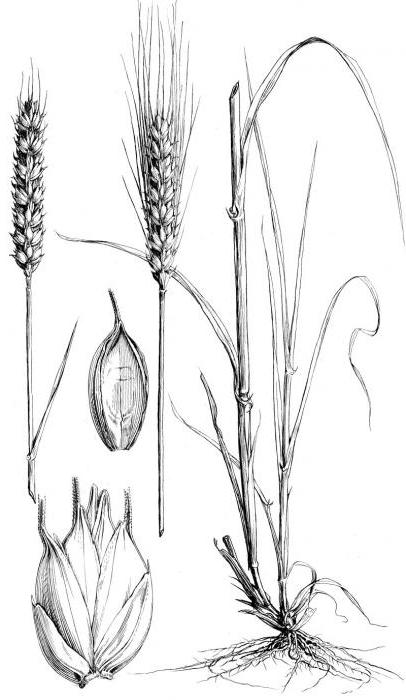After reading this article, you will learn what polyploidy is. We will consider what role it plays. You will also find out what types of polyploidy are.
Polyploid Formation
First of all, we will talk about what is meant by this mysterious word. Cells or individuals with more than two sets of chromosomes are called polyploids. Polyploid cells with a low frequency arise as a result of mitosis “errors”. This occurs when chromosomes divide, but cytokinesis does not occur. Thus, cells with double the number of chromosomes (diploids) can form. If they, after passing through the interphase, divide, they will be able to give rise (sexually or asexually) to new individuals whose cells will have twice as many chromosomes as their parents. Accordingly, the process of their formation is what polyploidy is. Polyploid plants can be obtained artificially using colchicine, an alkaloid that inhibits the formation of the mitotic spindle as a result of impaired microtubule formation.
Polyploid Properties
The variability of these plants is often much narrower than that of related diploids, since each gene is represented in them at least twice. When split in the offspring, individuals homozygous for some recessive gene will make up only 1/16 instead of 1/4 in diploids. (In both cases, it is assumed that the frequency of recessive alleles is 0.50.) Self-pollination is characteristic of polyploids, further reducing their variability, despite the fact that related diploids are predominantly pollinated crosswise.
Where are polyploids found?
So, we answered the question of what polyploidy is. And where are such plants found?
Some polyploids are better adapted to dry places or lower temperatures than the original diploid forms, while others are better adapted to special types of soils. Due to this, they can populate places with extreme living conditions in which their diploid ancestors would most likely die. With a small frequency, they are found in many natural populations. They are easier than the corresponding diploids, enter into unrelated crosses. In this case, prolific hybrids can immediately be obtained. Less commonly, polyploids of hybrid origin are formed by doubling the number of chromosomes in sterile diploid hybrids. This is one of the ways to restore fertility.
The first documented case of polyploidy
In this, less common, way, polyploid hybrids were formed between radish and cabbage. This was the first well-documented case of polyploidy. Both genera belong to the cruciferous family and are closely related. There are 18 chromosomes in somatic cells of both types, and 9 pairs of chromosomes are always found in the first meiosis metaphase. With some difficulty, a hybrid was obtained between these plants. In meiosis, he had 18 unpaired chromosomes (9 from radish and 9 from cabbage) and was completely barren. Among these hybrid plants, a polyploid spontaneously formed, in which there were 36 chromosomes in somatic cells and 18 pairs were regularly formed during meiosis. In other words, the polyploid hybrid had all 18 chromosomes, both radish and cabbage, and they functioned normally. This hybrid was quite prolific.
Weed Polyploids
Some polyploids arose as weeds in places associated with human activities, and sometimes they achieved amazing prosperity. One well-known example is the inhabitants of the salt marshes of the genus Spartina. One species, S. maritima (pictured below), is found in swamps along the shores of Europe and Africa. Another species, S. alterniflora, was introduced to Great Britain from eastern North America around 1800 and subsequently spread widely, forming large local colonies.
Wheat
One of the most important polyploid groups of plants can be considered the genus Triticum wheat (pictured below). The most common bread crop in the world - soft wheat (T. aestivum) - has 2n = 42. Soft wheat originated at least 8000 years ago, probably in Central Europe, as a result of natural hybridization of cultivated wheat with 2n = 28 with wild cereal of the same genus, having 2n = 14. Wild grass probably grew like a weed among wheat crops. Hybridization, giving rise to soft wheat, could occur between polyploids that occasionally appeared in populations of both parent species.

It is likely that as soon as 42-chromosome wheat with its useful traits appeared on the fields of the first farmers, they immediately noticed it and selected it for further cultivation. One of its parental forms, 28-chromosome cultivated wheat, occurred as a result of the hybridization of two wild 14-chromosome species from the Middle East. Wheat species having 2n = 28, and now continue to be cultivated along with 42-chromosomal. Such 28-chromosome wheat is the main source of grain for pasta production due to the high stickiness of their protein. This is the role polyploidy plays.
Triticosecale
Recent studies have shown that new lines obtained through hybridization can improve agricultural production. Polyploidy in breeding is used very widely. Particularly promising is Triticosecale, a group of man-made hybrids between wheat (Triticum) and rye (Secale). Some of them, combining wheat productivity with unpretentious rye, are most resistant to linear rust - a disease that causes great damage to agriculture. These properties are especially important in the highlands of the tropics and subtropics, where rust is the main factor limiting the cultivation of wheat. Triticosecale is now grown on a large scale and gained wide popularity in France and other countries. The 42-chromosome line of this cereal crop is most famous. It was obtained by doubling the number of chromosomes after hybridization of 28 chromosome wheat with 14 chromosome rye.
Polyploid Variety
In nature, they are selected under the influence of external conditions, and not due to human activities. Their occurrence is one of the most important evolutionary mechanisms. Nowadays, many polyploids are represented in the world flora (more than half of all plant species). Among them, many of the most important crops are not only wheat, but also cotton, sugarcane, banana, potatoes and sunflowers. To this list you can add most of the beautiful garden flowers - chrysanthemums, pansies, dahlias.
Now you know what polyploidy is. Its role in agriculture, as you see, is very large.